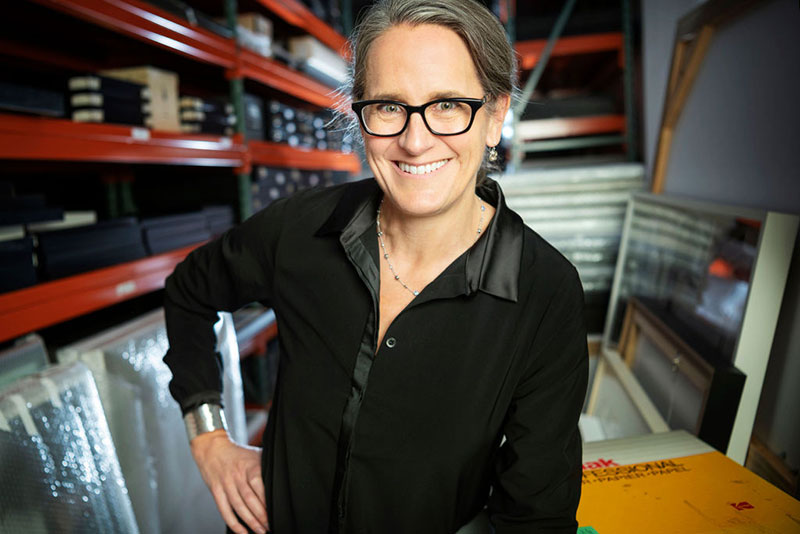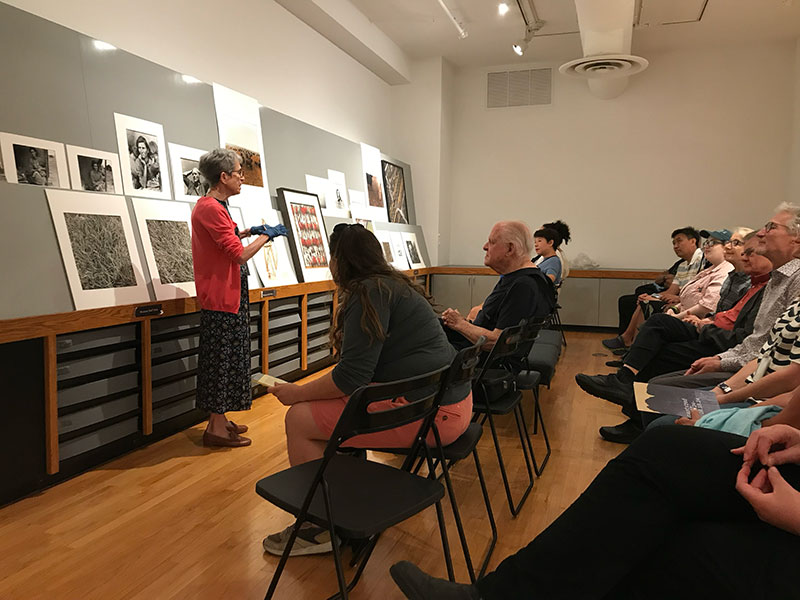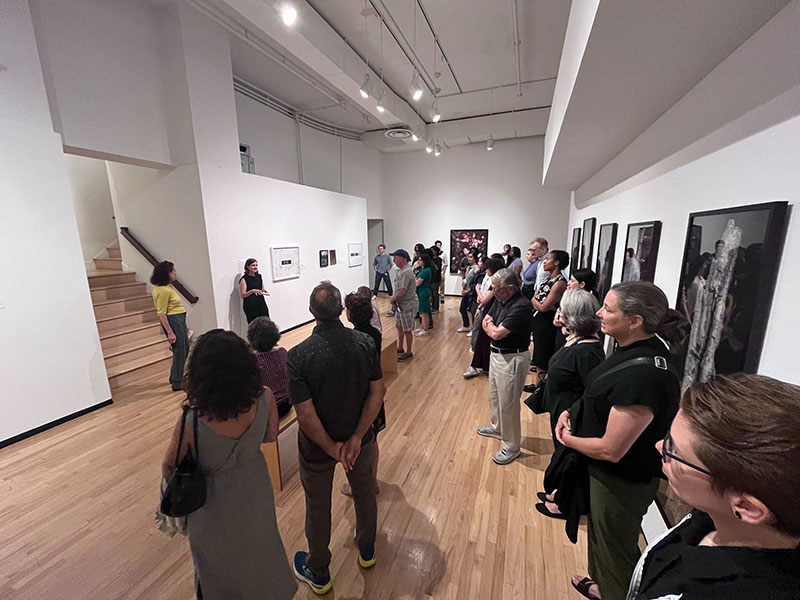CGN Insights: MoCP's Natasha Egan

CGN works with dozens of art world leaders, creatives and supporters all year long. Each one has a different perspective on the industry in general as well as their own role within it. CGN is pleased to share many of these insights and personal stories in a new online series. Our first interview is with Natasha Egan, Executive Director of the Museum of Contemporary Photography.

By ABBEY KOT
Natasha Egan has served as the MoCP’s executive director since 2011, formerly filling the roles of associate director and curator. This week, we sat down with her to discuss the inner workings of an establishment that combines industry professionals with working students.
Chicago Gallery News: While most museums focus on education, the MoCP is unique in that it is connected to a college and staffs many of its students. What do you feel some of the benefits are when working with students and emerging scholars in a professional museum setting?
Natasha Egan: MoCP’s affiliation with Columbia College Chicago is central to our mission of preparing students for the professional world. Our student staff come from various disciplines at both the undergraduate and graduate levels, and our team mentors them, providing valuable real-world experience. We expect a high degree of professionalism from our students, and they consistently meet this standard. For example, during our #AiWeiwei exhibition, Ai Weiwei’s team was impressed that our preparators were all student employees overseen by professional staff.
Many of our student staff pursue careers in the museum and art fields. For instance, Greg Harris, a former student of mine who worked on our operations team, went on to earn his master’s degree from the School of the Art Institute of Chicago and became the Assistant Curator at the DePaul Art Museum. He is now the Curator of Photography at the High Museum in Atlanta. Greg recently returned to Columbia College to give a lecture and critique graduate student work, creating a full-circle moment. He even mentioned that he still carries his MoCP tote bag.

CGN: As the executive director of the museum, you oversee all aspects of operation, from print viewings to installation plans; are there any recent challenges you can recall that allowed for creative problem-solving or a lesson learned?
NE: MoCP has a small but highly capable professional staff, each overseeing different departments such as operations, education, marketing, curatorial, and collections management. Despite recent budgetary constraints, our team has adapted by embracing changes in their job descriptions. This flexibility allows us to remain nimble and continue producing top-tier exhibitions and programs under adverse circumstances.

CGN: Your background is in higher education and fine arts photography, with an impressive and deep connection to Columbia College Chicago, working as an educator in the school’s photography department and holding the position of associate director at the MoCP for over ten years. Are there any surprising ways your knowledge of fine arts and background in education has translated into your time in the administrative side of the museum world?
NE: During my tenure at MoCP, I have curated over 50 exhibitions and collaborated with artists and institutions worldwide. Teaching at Columbia College Chicago for over a decade, both on campus and abroad in China, exposed me to diverse curatorial styles and institutional operations. These experiences have been invaluable as I now focus on strategic initiatives for MoCP’s future as Executive Director.
CGN: The turnaround time between shows at the MoCP tends to be fairly quick, with the gap between your current and next show set for only twelve days. What moments do you look forward to during the installation and execution of a new exhibition?
NE: After months or even years of developing exhibitions, it is always rewarding to see them materialize. The installation phase provides a deeper understanding of the exhibition beyond its conceptual phase. For students, it is a time to meet artists, learn more about the exhibited works, and develop new skills. It is also exciting to witness the public's reaction to the exhibition for the first time.
CGN: What is one piece of advice that you would give to someone wanting to get started in the museum world?
NE: Immerse yourself in the art world by visiting a variety of institutions, from the largest museums to the smallest galleries. Smaller museums often influence larger institutions. Additionally, visit artist spaces and nonprofits that offer unique perspectives outside traditional museum settings. Take the time to have informal conversations with art professionals to determine if this path is right for you.
For more information about MoCP and its programming visit mocp.org
#






